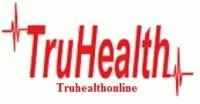On the other hand, nutrients are components of food; that means food contains nutrients. There are seven nutrients (carbohydrates, protein, fats, water, minerals, vitamins and phytochemicals) but a particular food may not contain all the nutrients hence we are advised to take a mixture of foods so as to get all the nutrients.
The seven nutrients referred to above are split into two groups: Macronutrients (Carbohydrates, Protein, Fat and Water) and Micronutrients (Vitamins, Minerals and Phytochemicals)
Once food is eaten by man, the nutrients contained in it undergo different processes of digestion and absorption in the body.
Phytonutrients or Phytochemicals are chemicals produced by plants to stay healthy; they protect plants from insects and ultra violet light. Phytochemicals give plant their colour, aroma and flavour. They are therefore plentiful in colourful fruits, vegetables, spices, whole grains, tea, legumes and nuts.
Phytochemicals are not essential for life or for us to be healthy but they can make us healthier. Phytochemicals have anti-oxidant and anti-inflammatory properties and are said to improve our resistance against diseases (immunity). According to the United States Department of Agriculture, consumption of diet rich in phytochemicals can reduce the risk for heart disease and cancer.
Below are the well-known Phytochemicals (Phytonutrients):-
1. Carotenoids
One of the most known phytochemicals, carotenoids and flavonoids are responsible for the colours of fruits and vegetables. They are responsible for the yellow, orange and red colours.
Forms of carotenoids include Lutein, zeaxanthin, astaxanthin, retinol, pro-vitamin A, lycopene, beta-carotene etc.
Carotenoids are strong anti-oxidants; are stored in the fatty tissues of animals
Sources of carotenoids include oranges, carrots, pumpkins, yellow and red fruits and vegetables, spinach, sweet potato, water melon and grape fruit.
Health benefits of carotenoids include protection of our sight (eye health), protection of our heart and skin, improved immunity against diseases, improved libido and male fertility
2. Ellagic acid
Ellagic acid is found in strawberries, walnuts, pecan, raspberries, cranberries and blackberries.
Like other phytochemicals it is produced by plants for protection against pests and infections. Human research shows that Ellagic acid has both anti-cancer and anti-oxidant properties. It is said to reduce the risk of cancer of the oesophagus, breast, skin, colon and prostate but more studies need to be done.
3. Flavonoids
Flavonoids as said earlier are well known phytochemicals responsible in part for the colours of fruits and vegetables; it is a very strong anti-oxidant. Sources of flavonoids include green tea, black tea, apple, citrus fruits, red grapes (used in making red wine) and soya beans.
Common forms of flavonoids include rutin, isoflavones and quercetin.
The health benefits of flavonoids include; lowering of bad cholesterol in the blood thus protecting the heart, lowers risk of cancer and improves immunity against diseases.
Those who consume adequate amount of flavonoids like the French people through drinking one or two glasses of red wine daily are said to suffer less from heart disease than other Europeans though their food is more cholesterol rich.
4. Resveratrol
This phytochemical is found in red grape skin (used for red wine), peanuts, blue berries, raspberries, mulberries and Japanese knotweed; like other phytochemicals they are produced by plants for their protection against pests and plant diseases. Hence the claim that red wine is good for the heart.
Resveratrol is said to be a strong anti-oxidant, it protects the cell’s DNA from damage by fighting against free radicals in our body. The latter (free radicals) increase cancer risk, accelerate aging and brain degeneration.
Research has shown that resveratrol reduces in human the risk of cancer, of heart disease by lowering the bad cholesterol level in the blood, lowers systolic blood pressure when consumed in high concentration; more than 150mg.
Due to the above benefits, it is taken as dietary supplement in the form of powder or pill made from red wine extracts, red grape seed extracts and Japanese knotweed extract.
However enough research has not been done to establish definitive uses, doses, duration of usage and efficacy in human
In high doses resveratrol is known to give synergy to blood thinning agents like warfarin, aspirin etc thus affecting blood clotting mechanism.
5. Glucosinolates
These are chemical substances occurring naturally in plants which are derived from glucose and some amino acids such as tryptophan; they are about 132 Glucosinolates known to occur in plants. They are found in cruciferous vegetables such as cabbage, broccoli, cauliflower and radishes; they are responsible for the pungent smell and sometimes bitter taste of these vegetables
Glucosinolates are said to be broken down in our intestines into Isothiocyanates, the latter interrupts cancer causing actions in the body and fights against aging of cells; it also prevents the spread of cancer.
Some research in Europe and North America have shown weak association between Glucosinolates and risk for cancer of the prostate, colon-rectum, lungs and breast; some who consumed greater quantities of the vegetable mentioned had some anti-cancer benefits.
6. Phytoestrogens
These are oestrogen like substances found in plants, in human they bind to oestrogen receptors. Phytoestrogens are found in Soya beans and Red clover, consequently extracts of these plants are used in the management of post-menopausal problems by some practitioners. However they have not been found to significantly reduce hot flashes (flushes), nor improve bone density.

